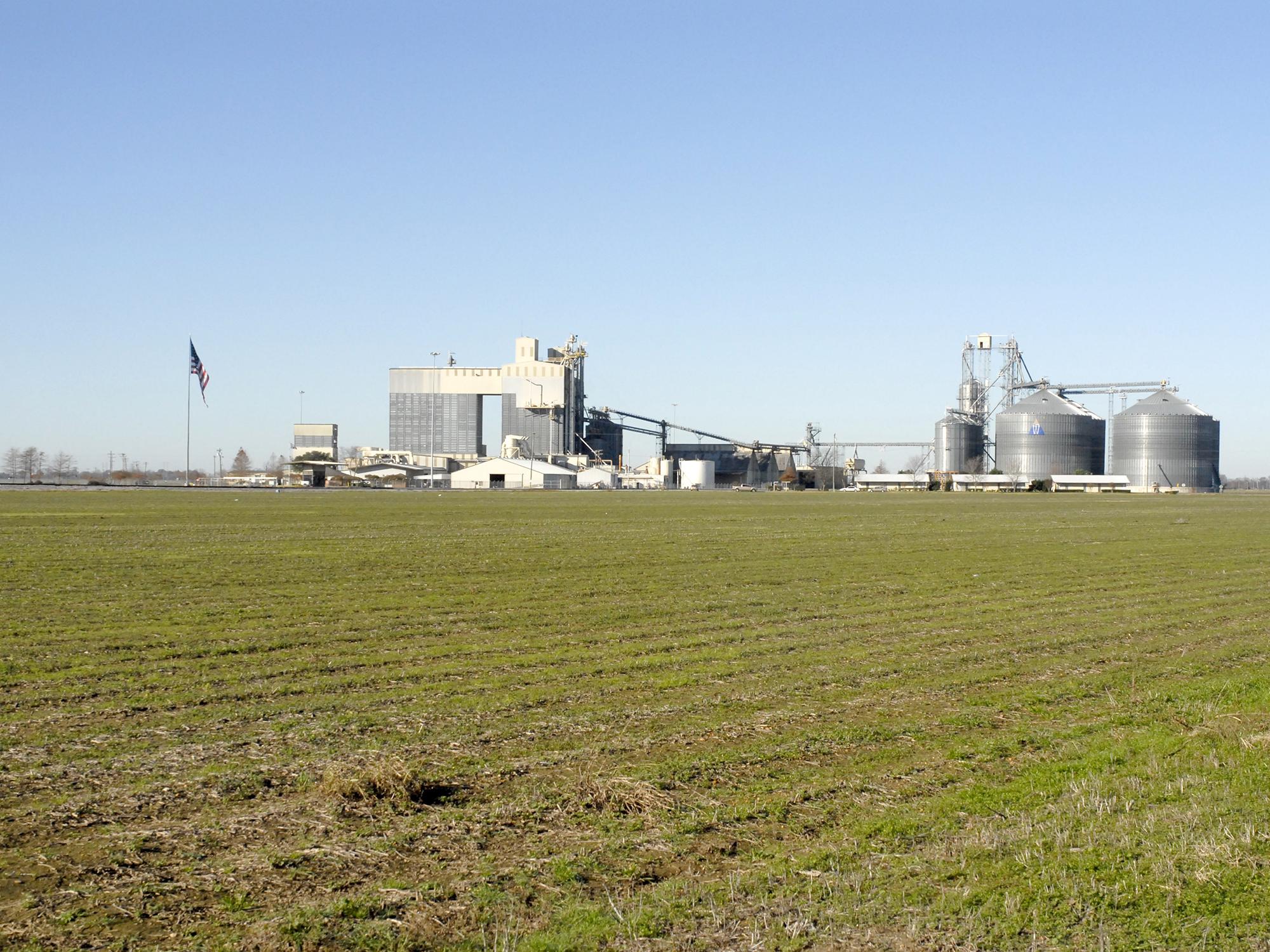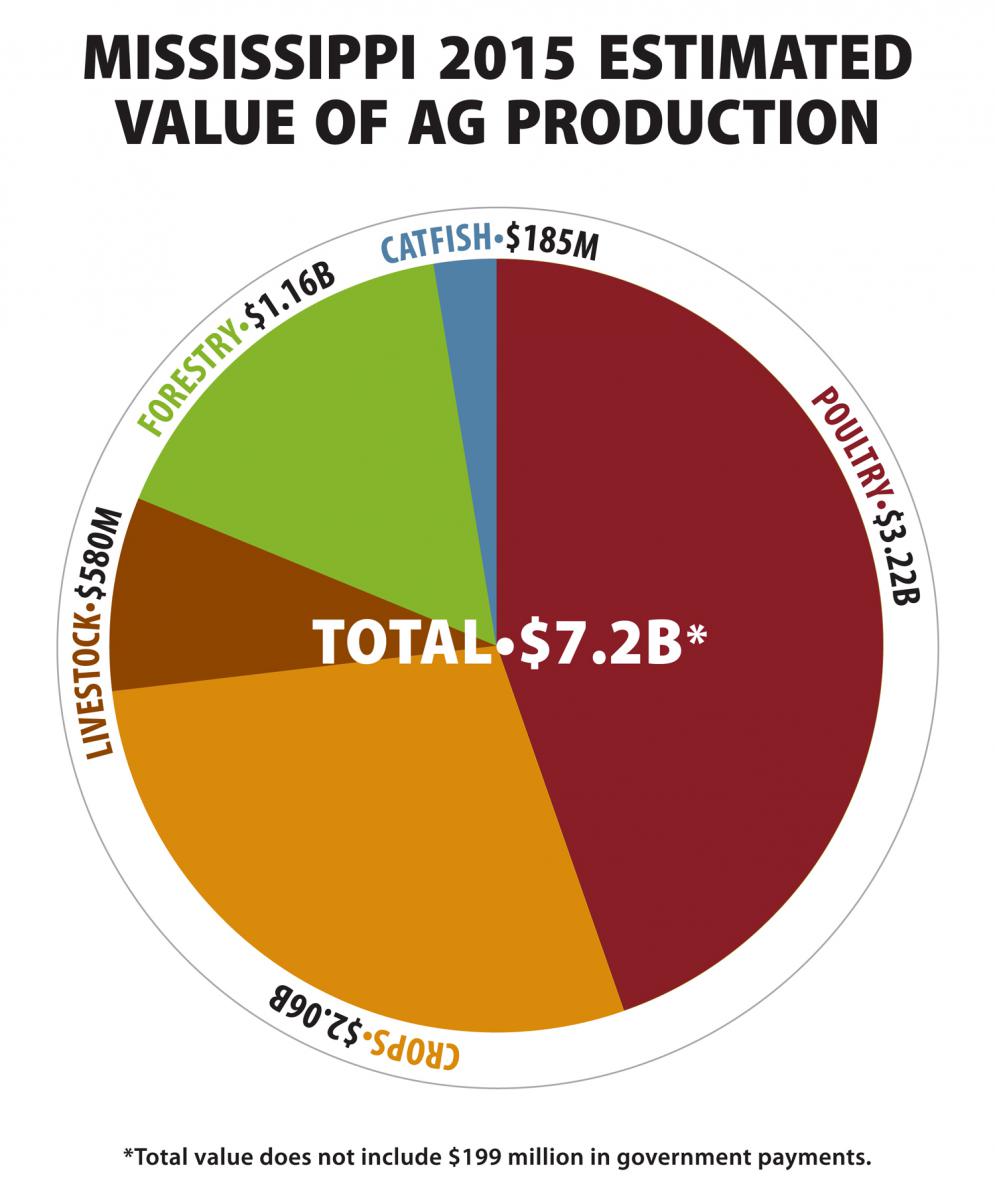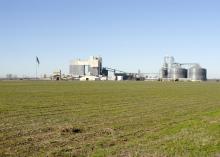Information Possibly Outdated
The information presented on this page was originally released on December 18, 2015. It may not be outdated, but please search our site for more current information. If you plan to quote or reference this information in a publication, please check with the Extension specialist or author before proceeding.
State ag values took a small hit in 2015
STARKVILLE, Miss. -- Neither crop yields nor prices were particularly bad in 2015, but Mississippi’s estimated state agricultural production value still dropped to $7.2 billion, a 4.9 percent decrease from the previous year.
Brian Williams, an agricultural economist with the Mississippi State University Extension Service, said the decline in agricultural value has two causes.
“Yields are down nearly across the board from last year’s records. It’s not that the yields were necessarily bad this year; rather, the bar was set very high last year in terms of yields,” he said. “Additionally, most prices are at or below year-ago prices.”
Government payments added $199 million to the state’s agricultural value. When these funds are included, agriculture brought an estimated $7.4 billion to the state, down just 4.5 percent from 2014.
Poultry and forestry held the state’s top two spots, posting values of $3.2 billion and $1.16 billion respectively. Both saw increases this year, with poultry rising an estimated 3.4 percent and forestry jumping an estimated 13.5 percent.
Egg value is the biggest surprise in the year’s numbers: Production was up about 5 percent in 2015, but value was up almost 40 percent.
“There was a sharp increase in the value of egg production due to the avian influenza outbreak in Iowa and Minnesota,” Williams said.
Williams said the other big winners in Mississippi agriculture were peanuts and sweet potatoes.
“Each of those commodities saw a significant increase in value from a year ago,” he said. “Peanut production was much higher than a year ago. Peanuts looked to be more profitable than corn, soybeans and cotton, driving producers to plant more acres.”
Peanuts generated an estimated $28.8 million for Mississippi producers.
Jason Sarver, Extension peanut specialist and Mississippi Agricultural and Forestry Experiment Station researcher, said the farm bill provided incentive for new growers to get into peanuts and for existing growers to increase acreage.
“Since the price of other commodities has not come up, I think we will increase peanut acreage again next year,” Sarver said. “Although we had some drought issues and tough harvest conditions during the 2015 season, when you put the pencil to the paper, peanuts will still be economically favorable to most other crops entering the 2016 season.”
Williams said sweet potatoes are expected to have better prices than a year ago, which boosts the crop’s value.
Stephen Meyers, Extension sweet potato specialist, said the crop saw a 12 percent increase in planted acreage over the previous year primarily due to increased demand as per capita consumption continues to rise in the U.S.
“Another reason acreage is up can be attributed to fairly lower row crop prices in 2015,” Meyers said. “Many of our growers in Mississippi farm sweet potatoes and row crops, and they opted to plant more sweet potato acreage and less acreage in other crops.”
He said there may be another slight bump in planted acres in 2016 because of increased interest in sweet potato production among more traditional row crop producers.
“As long as consumer demand for sweet potatoes domestically and internationally continues to increase, we likely will see some growth in the U.S. sweet potato industry.”
Row crop values dropped to $2.06 billion, a 22 percent decline in value from 2014. Williams said low row crop prices may be the new normal.
“We saw very tight margins for most crops this year, and it looks like that will continue into 2016,” he said.
Soybean remains the most valuable row crop and the state’s No. 3 agricultural commodity, posting a $930 million value in 2015. That value is down 26 percent from the $1.3 billion value the crop posted in 2014.
Corn and cotton were the next most valuable row crops in 2015. Corn dropped 11 percent to a $343 million estimated value, and cotton fell 34 percent to $254 million. Rice had a 2015 estimated value of $132 million, down 28 percent.
“Cotton’s decline is driven primarily by lower production, while soybean production is only slightly lower than a year ago, but prices are more than $2.20 per bushel lower.” Williams said. “Corn production is expected to be equal to last year, but prices are about $.50 lower than a year ago.”
Williams said rice production and prices are quite a bit lower than a year ago. Wheat lost more than half its value and fell to $32 million, a drop driven by a combination of significantly reduced acreage and lower prices. One bright spot was grain sorghum’s 8.4 percent increase to an estimated value of $38.5 million in 2015.
Specialty crops saw little change, dropping just an estimated 1.1 percent to a 2015 value of $112 million. Hay dropped 5.1 percent to a $105 million estimated value.
Row crops were not the only big losers this year in Mississippi agriculture. Markets were not favorable for dairy, and milk declined about 37 percent from 2014 levels to an estimated value of $31.7 million.
Cattle and calves rose slightly to $448 million, a 1.4 percent increase from 2014. Catfish held fairly steady in 2015 with an estimated value of $185 million, down just 2.3 percent from the previous year. Hogs dropped 14 percent in value to an estimated $100 million.
















